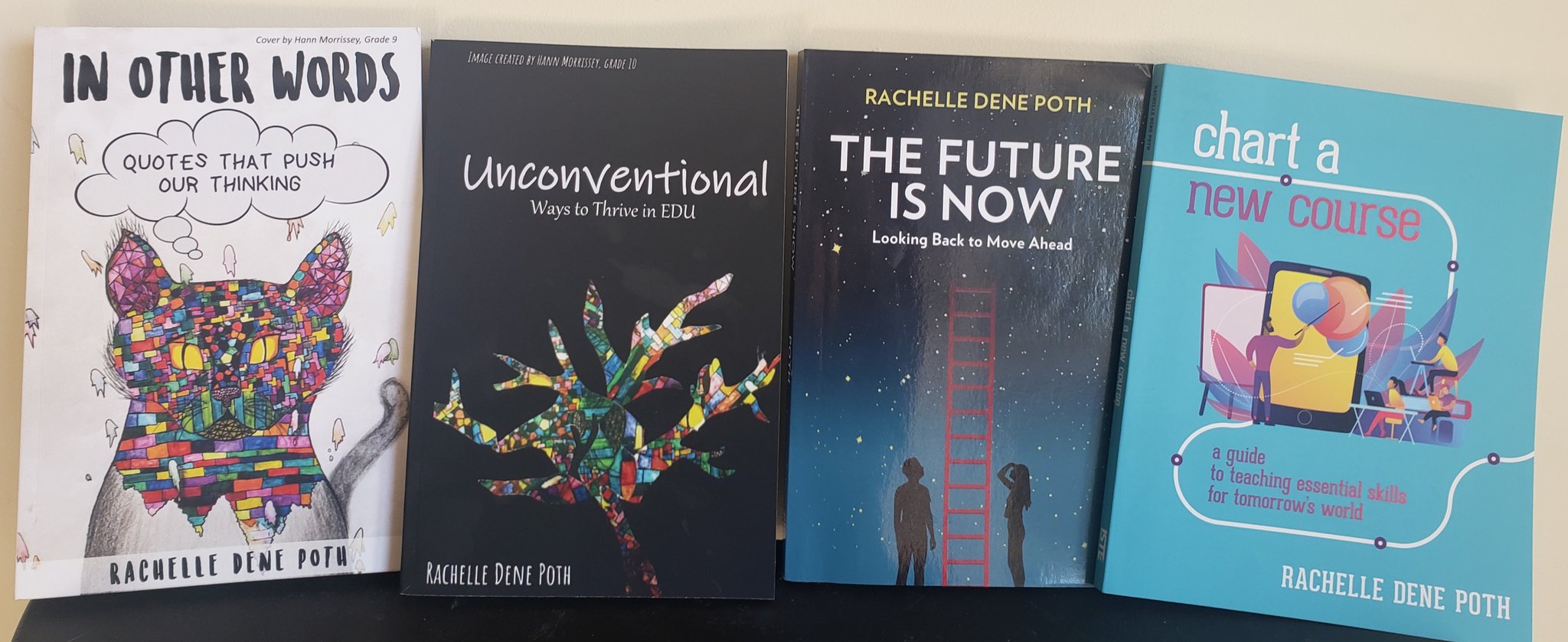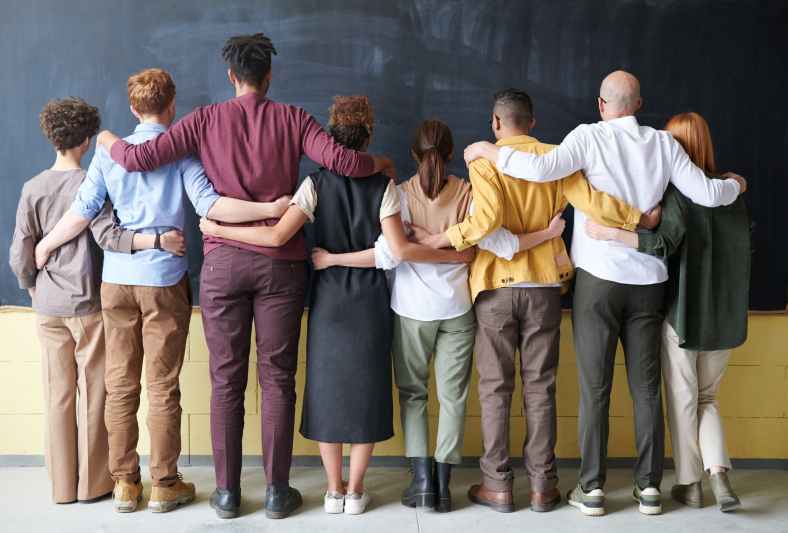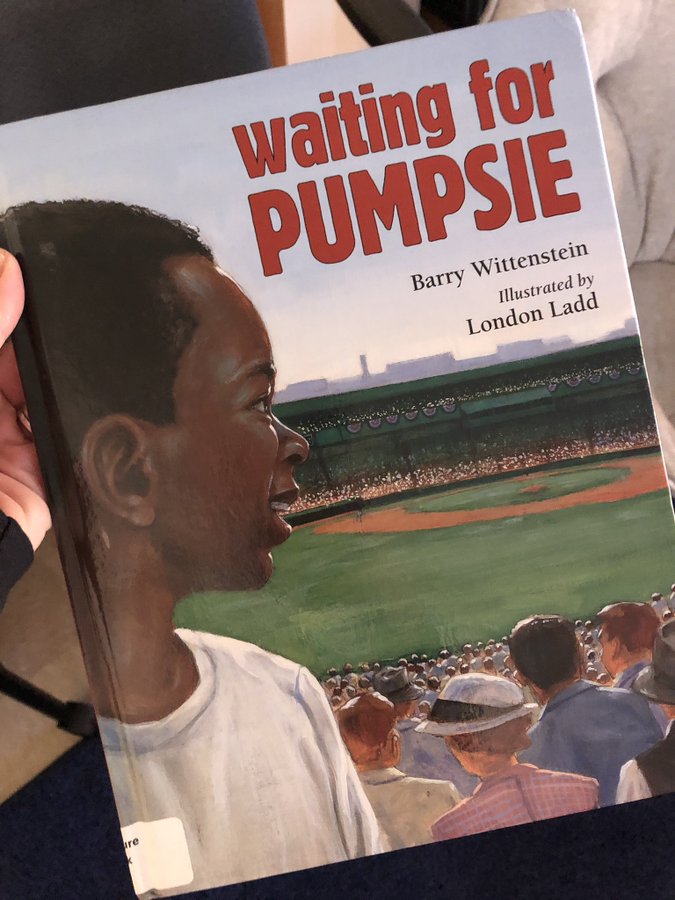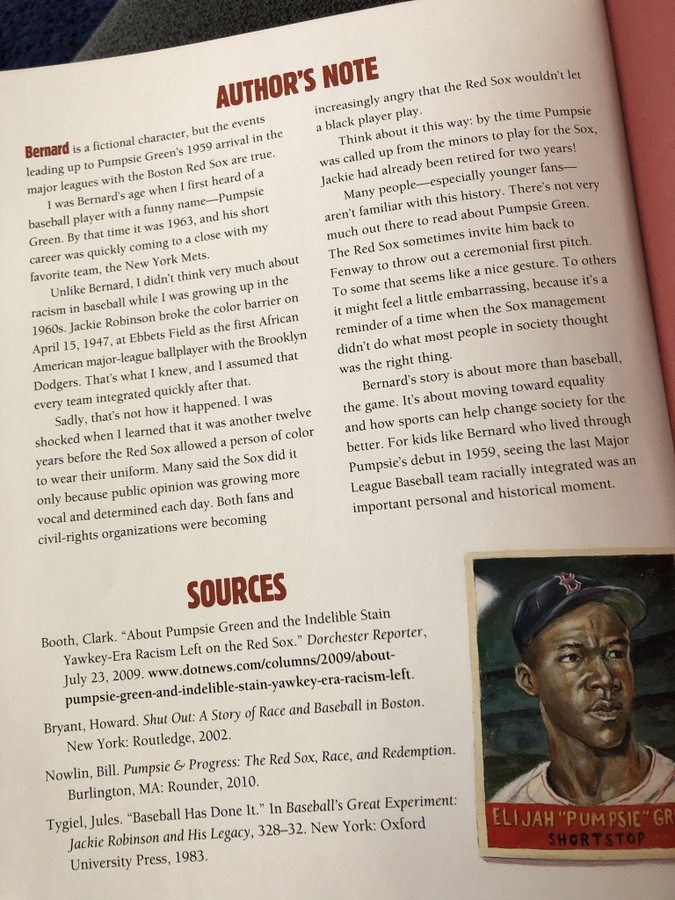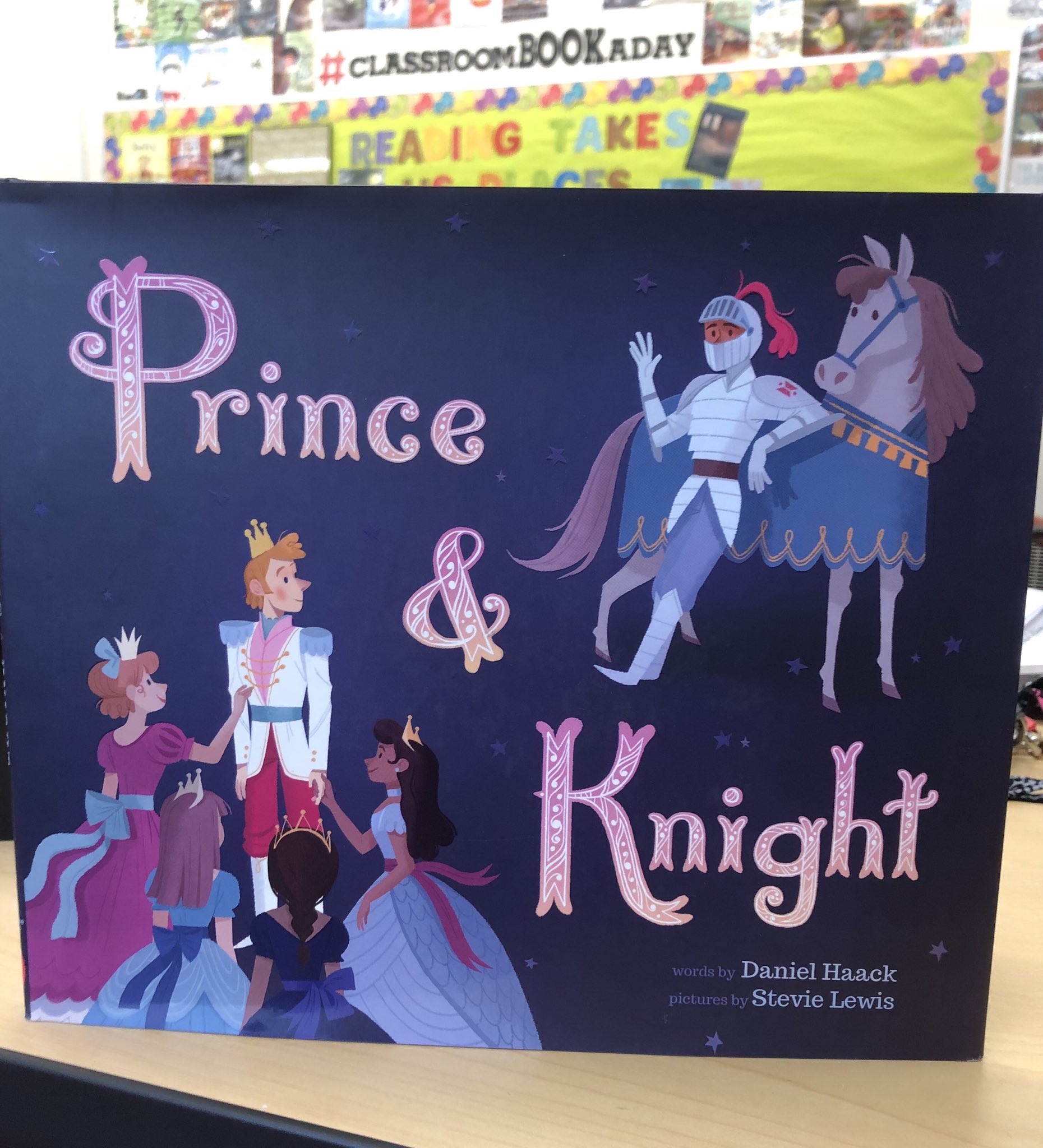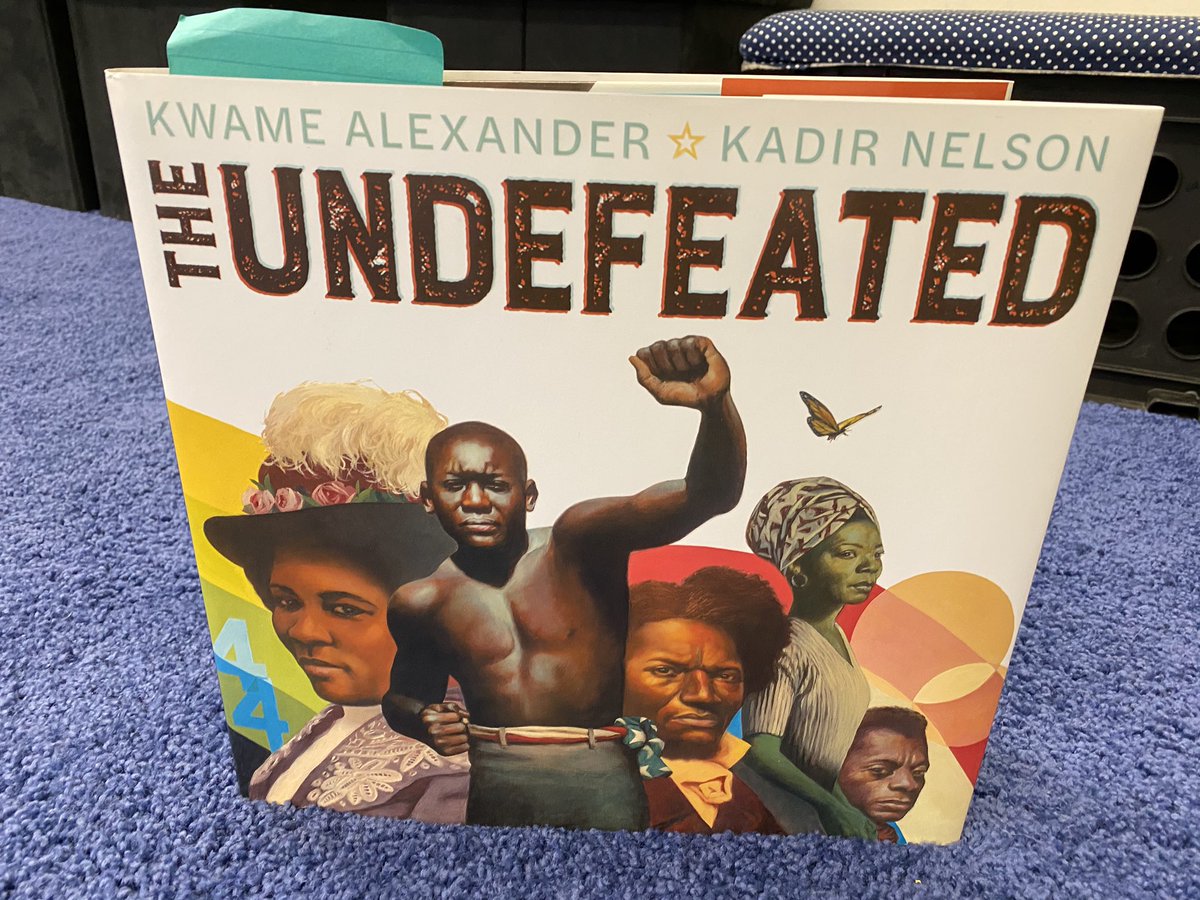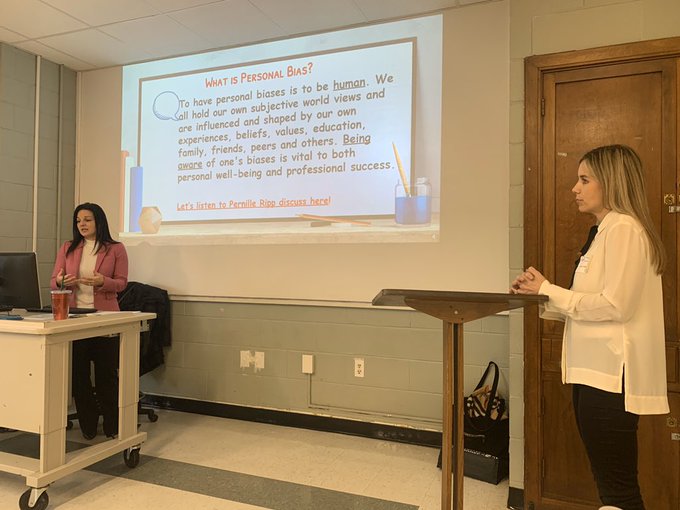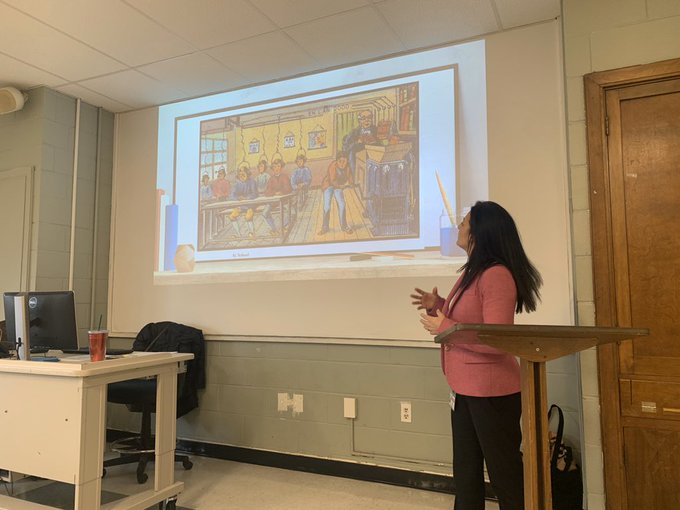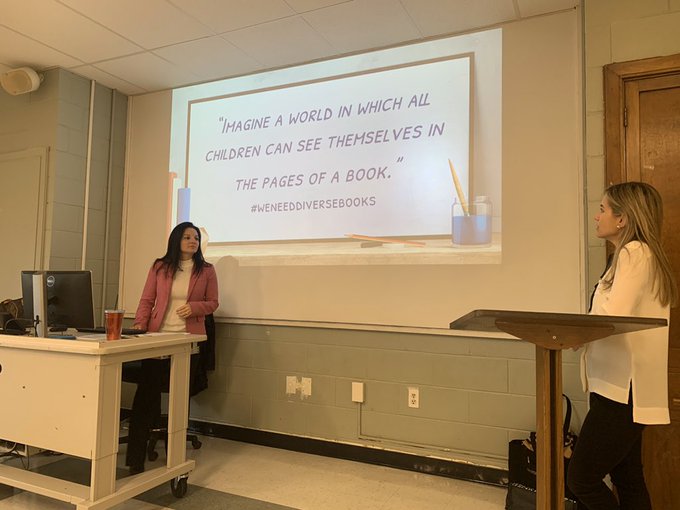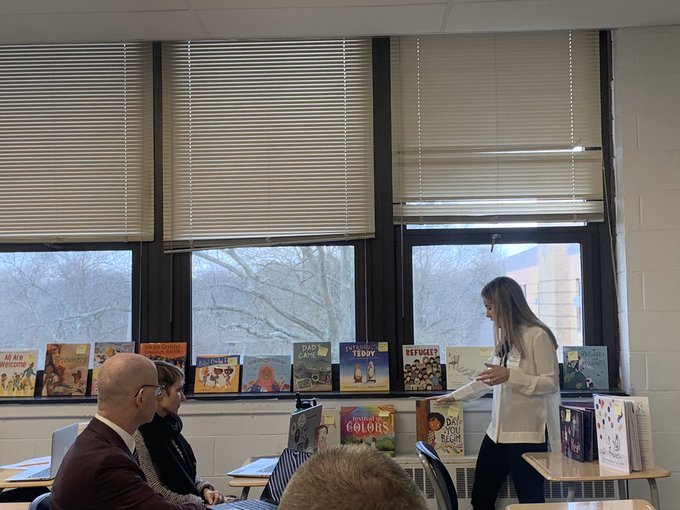Guest post by Deidre Roemer, originally posted on her site.

This is hard. I was very tempted to have that be my entire post as that is how so many people, including me, are feeling these days. I am always very solution focussed and generally very positive. That hasn’t changed, but I am trying to adjust how I approach solutions and celebrations. I am trying to listen to more, acknowledge that this is hard, recognize amazing work frequently, encourage everyone to take several deep breaths, and then offer as much support as I can to help. I have also been reaching out for help from my incredible support system. I need it. This is hard for everyone.
Our community has been asking questions about how we are supporting the mental health of our students right now. It’s a question we should be asking every day all year long whether we are in a pandemic or not, but this time has undoubtedly brought the concern to the forefront more than ever. As I compiled the list of what our team has done over the last several years to support learners’ mental health, it was staggering to see how much we have added and embedded across contexts. We have added licensed therapists to each school site that see learners through their insurance and help families who don’t have access to insurance apply for it. Some of those therapists also co-teach in classrooms and have office hours for staff so they can problem solve how to best help learners. We have classroom teachers all over our district embedding social-emotional learning lessons and Mindfulness into daily instruction. Our teachers spend a lot of time building relationships with our learners and offering them opportunities to build relationships with one another. We have a school counselor, social worker, and/or a school psychologist at each school to work with staff, learners, and families. We have Hope Squads at all our secondary schools so our learners have peer to peer support.
Our professional development has also included training over the last several years in understanding trauma, culturally responsive practices, restorative practices, empathy and design thinking to solve problems, Zones of Regulation, Universal Design for Learning, innovative classroom practices, and many more. The idea is that staff members (including teachers, administrators, secretaries, assistants, recreation staff, facilities, and food service) have a wide array of tools to use in our schools to understand and empower all learners. They often get to choose sessions that are important to them or suggest topics on which they would like professional development as we want all staff to feel empowered in their work. We have also tried to build a lot of support for our staff through coaching as they need to feel our support to make it all work.
Now, we are trying to make education work in the middle of a pandemic. Our learners are all virtual right now. We are anxious to see them back in school and were optimistic a few weeks ago that we could start bringing them back a few days a week until our health metrics took a turn for the worse. We meet regularly with our local health department to discuss safety and are furiously planning safety measures and logistics for the time when we bring our learners back into physical schools. In the meantime, our recreation department has opened camps for elementary students and students with special needs that families who need care and/or support with virtual instruction can access. The camps can be kept small and can spread out across large spaces while providing a needed resource for some of our families in the safest way possible.
Our teachers are more stressed than normal. Our families are more stressed than normal. Our learners are more stressed than normal. Our administrators and coaches are more stressed than normal. Everyone is feeling disconnected from one another. The unpredictability of the current situation is overwhelming for all of us. The length of time this has gone on with no foreseeable end in sight is making it even more challenging. We are also headed into the cold and flu season with the weather getting colder, which means fewer opportunities to be outside. We have all had to adapt and do it quickly. It can be done, but this is hard. It is okay to say that out loud and recognize it.
I am really proud of the work we have done to shift the learner experience over the last several years, which is serving us well in virtual instruction. It does not make this less stressful on our team, but many of them have been adapting and shifting for years so they have tools to do it. We have been very purposeful in finding ways to meet teachers and administrators where they are and encourage them to make small steps that add up to big ones. As a district leadership team, we have tried to share the message that we are here to support our schools in any way we can to empower our learners to be ready to live life on their own terms when they graduate from our system. We are now forced to make shifts at warp speed and shift more frequently than we would ever normally ask people to do. It means instead of just support to grow as professionals; we had to start thinking creatively about how to take some things off their plates.
Our teachers have the option to teach from home or school during virtual instruction as we trust them to know what is best for them. We have built more planning time into the day at each level and shifted our professional development days to be planning and self-directed time for teachers. Purposeful professional development with choice for teachers is still a key element of our strategic plan, but that needs to look different right now. Instead of planning required sessions for all staff to attend, we shifted to self-paced courses that teachers could choose from and complete at their own pace and time. They could also choose not to select one at this time if they didn’t feel it was something they could take on. We will circle back to those staff later and build professional development support for them when they are ready for it and as they need it throughout the year.
We have encouraged our administrators to give our teachers permission to engage learners differently and focus on their interests. Academic content is an essential part of our work, but we can spend more time connecting and embed content as we go. In a collaboration session during emergency remote teaching last spring, a staff member shared how a learner went to work with his dad each day and spent a huge portion of one day on Facetime with his teacher showing her his community and what he had learned about his dad’s job. Others in that same session shared similar stories apologizing that they weren’t doing anything “academic”. My response was that what they were doing was building a sense of belonging and an academic mindset, which IS essential to academics and life success. We worked all summer to be ready for virtual instruction that was more robust than what we were able to do in emergency remote teaching last spring, but that doesn’t mean it can’t still be focused on the whole child and embed time to connect as people. Teachers can find a balance synchronous time with some asynchronous time to meet the needs of learners. They can use choice boards, complete planned activities, write reflections, or work on long-term projects during the time they are asynchronous. They know their families and learners best, and we trust them to make the right decisions on finding balance.
We always want to hear feedback from our learners, staff, and community as it allows us to know what we are doing well and where we need to improve. We have sent out an employee engagement and parent satisfaction survey twice a year and learners complete a social-emotional learning survey so we can gauge how they are feeling about the development of their own skills in self-regulation, social awareness, classroom effort, growth mindset, and curiosity for the last several years. This year, we had the opportunity to offer different surveys that were much shorter for staff and families. While we still needed their feedback, we also needed a quick and easy survey for them to complete that gave us fast results so we can adjust resources and support. We added a wellness survey for our learners and do empathy interviews to ask them directly about how they are doing, if they are connected to adults and peers for support, and what they need to feel successful.
We have encouraged our principals to think about a shift in teacher evaluation as well. Our teacher evaluation process is intended to be one of self-reflection wherein the teacher sets a student learning objective for the year and a professional practice goal. The observations should be an opportunity to collect evidence towards those goals with time to check-in with the teacher to help them celebrate success and adjust the goals throughout the year. We have not always approached teacher evaluation that way but have been trying to move to a more reflective process over the last year. We get to take this unusual year to accelerate that process so observations can be done in short one-on-one meetings during which teachers can share the evidence they have collected about their own their own practice to share with us. We want to take the pressure off the formal nature of teacher observation but still get at the intent of the cycle of self-directed, continuous improvement in a way that also gives us more time to connect individually with each staff member. We have some schools trying this out in the next couple of weeks. I am anxious to hear how it goes and to find out if the change alleviates some stress for administrators and teachers.
Our teachers also had the opportunity to meet as grade levels and departments before school started to share ideas and create lists of resources they thought they would need to make this all work. We have ordered thousands of whiteboards, music kits, art kits, sensory tools, apps, and online subscriptions. We want our learners to have access to instructional materials in addition to technology and hotspots at home. We trade reading books and give out learning kits once a month in a drive-up system at most of our schools. We also added many supplies to schools as students won’t be able to share materials with one another as easily in classrooms once we are back. We’ve added some new and adaptive resources for teachers that all still align with our strategic plan but make the work more doable in a virtual or distance learning. Teachers continue to send us requests regularly as they plan engaging activities to do at home in the next few weeks. Sometimes the requests make me wonder what will come next, but mostly they make me excited that our learners are still having interactive, hands-on opportunities in our virtual world.
This is hard. Saying so doesn’t make it any easier, but it does create space for us to rely on each other to get through it. I want all our staff, learners, and families to know that we see them. We see the efforts they are putting in each hour of the day. We see that they sometimes need us to support them in new and different ways. We see that they may feel overwhelmed by the world right now and sometimes need some space to feel that. We see that we need to find even more ways to connect and listen to them. Mostly we see that they are all doing the best they can each day, despite everything that is thrown at them, to always keep what is best for children at the forefront. I love this quote by Todd Whitaker, “The best thing about being a teacher is that it matters. The hardest thing about being a teacher is that it matters every day.” Not only does teaching matter, but the people who do it each day matter too.
I am a proud mother, wife, and educator dedicated to creating experiences for all learners that are authentic and connect their time in school to what and who they want to be well beyond high school. I serve as the Director of Leadership and Learning for the West Allis- West Milwaukee School District in West Allis, WI. The thoughts I share here are my own and my reflections on our work. View all posts by Deidreroemer
*********************
**Interested in writing a guest blog for my site? Would love to share your ideas! Submit your post here.
Looking for a new book to read? Many stories from educators, two student chapters, and a student-designed cover for In Other Words.
Find these available at bit.ly/Pothbooks



